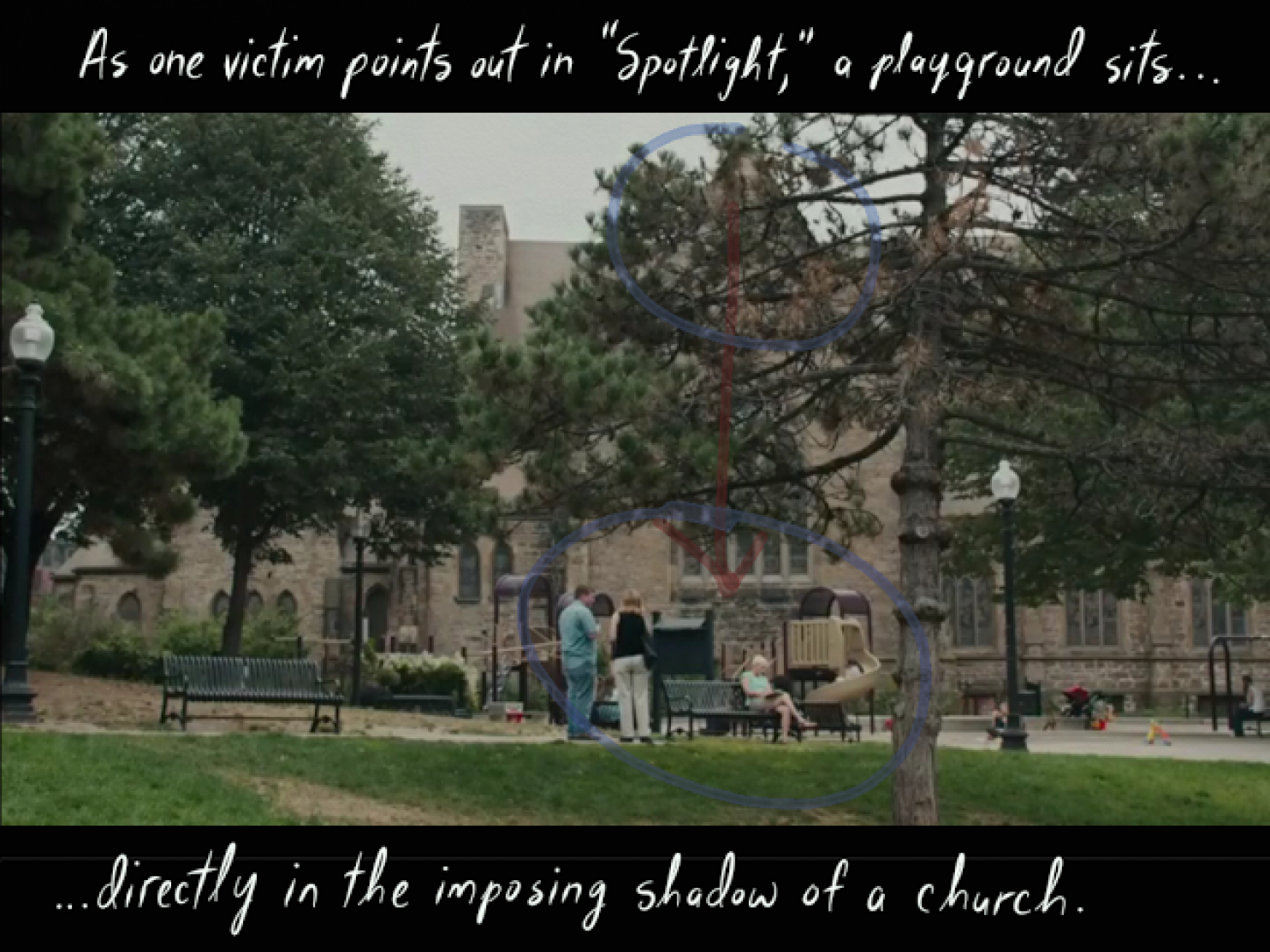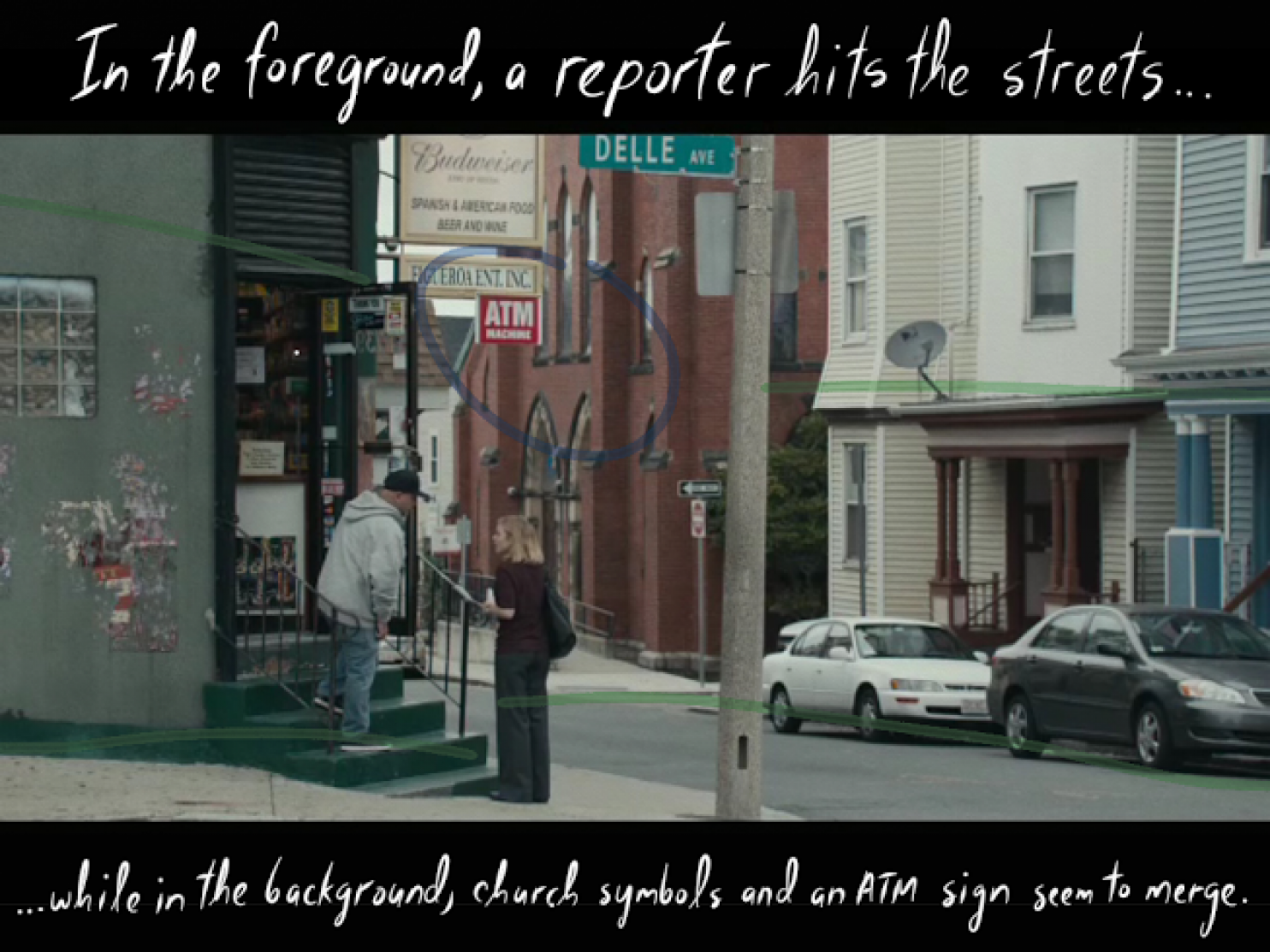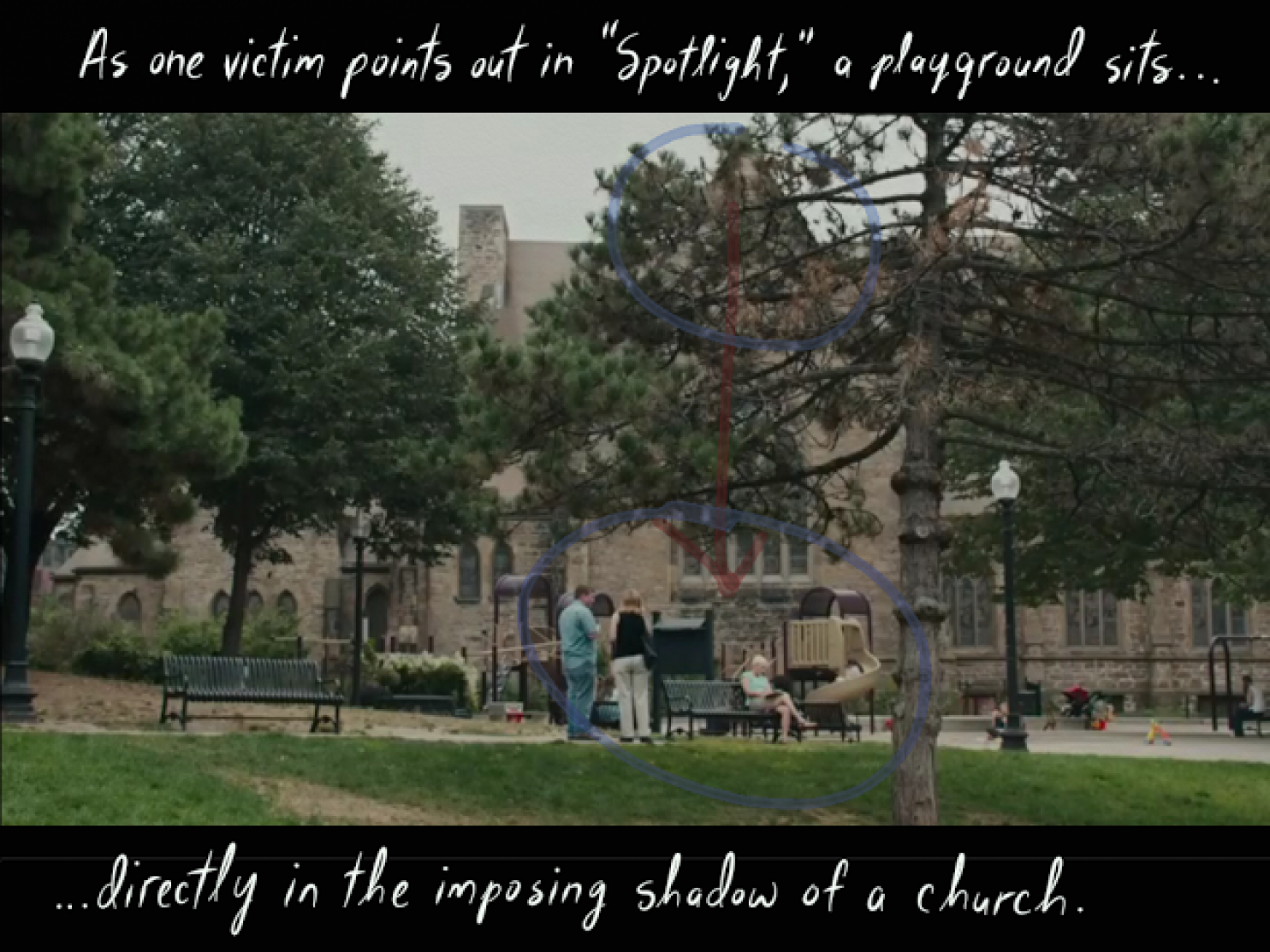The Oscars : How ‘spotlight’ Is a Master Class in the Art of Visual Nuance
By Michael Cavna
I LIVE for composition. Whether staring at a still-life or gazing at the glow of a projected image in motion, there is something beguiling about the balance of objects created in space and manipulated to trip the wires of our minds. To decode composition is to understand what the artist is saying without words; you are invited to join in this telepathic dance. This year, five wonderful cinematographers are nominated for Oscars, including two favorite legends, Roger Deakins (“Sicario”) and Emmanuel Lubezki (“The Revenant”): Both are virtuosic in their ability to elevate storytelling through visual craft. And both are painters in space who can dazzle you with their panache. Then there is a film like “Spotlight,” which is up for six Oscars this weekend, including best picture. Truthful films that function as procedurals of journalism and the law often dwell in the cinematic realm of nuance. The camera must inform but not distract, and the visual tone necessarily must match the gravitas of the tale told. Among the films that “Spotlight” director Tom McCarthy has said he drew influence from are “All the President’s Men” and “The Verdict,” and it’s worth noting that neither of those much-lauded movies received Oscar nominations for cinematography. (The former film won four Academy Awards, and was up for best picture; the latter film was nominated for five.) Visual subtlety isn’t particularly magnetic near awards hardware, yet it’s an art of informational restraint unto itself. If you look closely, you can be dazzled by the discipline. That is the level where Masanobu Takayanagi (“Black Mass,” “Silver Linings Playbook”) can best be appreciated in “Spotlight.” As the D.P., he aids the filmmakers in not only orchestrating the scenes, but also in illustrating the themes. Having watched “Spotlight” twice now, here are eight visual “tricks” and concepts that I especially appreciated through an artist’s eye:
1. Architecture as omnipresent virtual character. It is a deft moment in which the Oscar-nominated screenplay decides to have a character vocalize what we can see: that the church architecture sits over the city like a physical character.
An abuse victim (portrayed by Michael Cyril Creighton) points out to Globe reporter Sacha Pfeiffer (Rachel McAdams) that a Catholic church not only rests near them, but that it also overlooks a playground.
That line is meant to heighten our awareness; the spires are everywhere, just as the decades of embedded and shrouded church crimes are. The church is tightly stitched within the fabric of the community, and the criminal secrets are conspiratorially swept beneath the rug. And when reporters begin digging and showing up on oft-unwelcome mats, the spires — like “Great Gatsby” signage — seem to survey all. 2. The outsider as optical searchlight. If the church seems to see all, then “Spotlight” depicts new Globe editor Marty Baron (now The Post’s executive editor) as a presence who is peering back. Cinematically, we see the Baron character staring through windows, his visage sometimes reflected in the pane. In this way, we, as viewers, also become active participants in the act of surveying this new landscape and looking for clues. 3. Let there be light — and shadows. For a cinematographer, being gifted with a script titled “Spotlight” must feel like a creative godsend. The visual metaphors literally bounce off the walls, as if this were a shadow play staged in Plato’s Cave. Throughout the film, reporters and advocates and victims are, to differing degrees, trying to shine the light of truth on a legacy of secrets in the shadows (sometimes against the loaded metaphoric backdrop of Christmas lights). This is particularly effective because it works in tandem with… 4. Seeing the vertical picture. If journalistic discovery means digging, then excavation means plunging downward, into the darkness (where in one scene, even a dead rat fittingly sits). The Spotlight team is often moving downward and into dark corners — which in turn means surfacing the truth often means moving upward, toward the light. (And aptly, in the jargon of journalism, one story is “buried” in the Metro section.) And so, in scene after scene, the stairs and stairwells abound as places of informational — and emotional — transaction and transportation. 5. The lighthouse effect. There is a brilliance to the “blocking” as reporters chase the story. In that pursuit, upon a moment of discovery, the pursuer often becomes fixed and stationary as if frozen, momentarily fazed by a new truth — as the pursuant continues in motion. That “lighthouse” effect is similar to the opening scene, in which a young cop’s head swivels to track a “getaway.” 6. The aperture of expanding discovery. It is one of my favorite “still/steady” scenes in the film. The camera is tight on a phone, as we hear the caller — former priest and psychotherapist Richard Sipe (voiced by frequent “ring of legal authority” actor Richard Jenkins) — share from his decades of research. The story is so much bigger than the reporters realize. The pan-out is slow, but perfectly underscores the viewer’s shared sense of growing discovery. 7. The paper chase. Instead of the money, the Spotlight reporters are more often chasing the paper: sealed documents, forgotten clips, church directories, discarded victim lists. And ultimately, the paper (still) was delivered to your doorstep. In so many ways, this film is a celebration of, and an ode to, the era of paper over digital. 8. No time for games. Throughout “Spotlight’s” Boston, sports talk flows like ale as it lubricates conversation and affirms bonds. But in some tragic cases, it was sports that provided an environment and opportunity for child abuse. And in one short visual metaphor — after scenes set on a golf course and at a Sox game — reporter Matt Carroll (Brian D’Arcy James) is shown literally putting aside the games, as he and his children head to church. As in so much of the film, the visual story — as any good news photographer can tell you — lives to support the larger narrative. Long live the art of cinematic nuance.
|
.
Any original material on these pages is copyright © BishopAccountability.org 2004. Reproduce freely with attribution.




